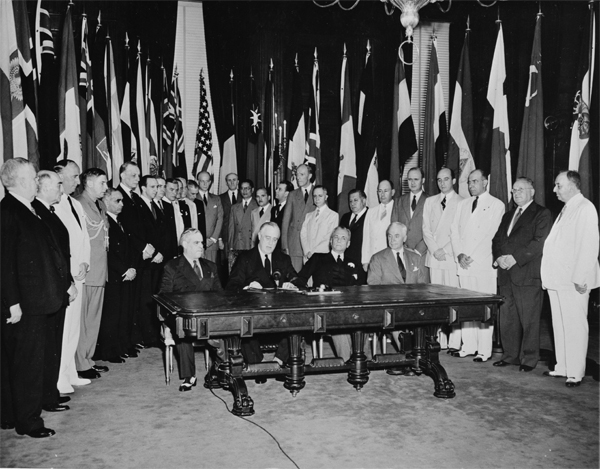
FDR establishes modern Thanksgiving holiday on November 26, 1941
FDR establishes modern Thanksgiving holiday: President Franklin D. Roosevelt signs a bill officially establishing the fourth Thursday in November as Thanksgiving Day.
The tradition of celebrating the holiday on Thursday dates back to the early history of the Plymouth and Massachusetts Bay colonies, when post-harvest holidays were celebrated on the weekday regularly set aside as “Lecture Day,” a midweek church meeting where topical sermons were presented. A famous Thanksgiving observance occurred in the autumn of 1621, when Plymouth governor William Bradford invited local Indians to join the Pilgrims in a three-day festival held in gratitude for the bounty of the season.
Thanksgiving became an annual custom throughout New England in the 17th century, and in 1777 the Continental Congress declared the first national American Thanksgiving following the Patriot victory at Saratoga. In 1789, President George Washington became the first president to proclaim a Thanksgiving holiday, when, at the request of Congress, he proclaimed November 26, a Tuesday, as a day of national thanksgiving for the U.S. Constitution. However, it was not until 1863, when President Abraham Lincoln declared Thanksgiving to fall on the last Thursday of November, that the modern holiday was celebrated nationally.
With a few deviations, Lincoln’s precedent was followed annually by every subsequent president–until 1939. In 1939, Franklin D. Roosevelt departed from tradition by declaring November 23, the next to last Thursday that year, as Thanksgiving Day. Considerable controversy surrounded this deviation, and some Americans refused to honor Roosevelt’s declaration. For the next two years, Roosevelt repeated the unpopular proclamation, but on November 26, 1941, he admitted his mistake and signed a bill into law officially making the fourth Thursday in November the national holiday of Thanksgiving Day.
History Channel / Wikipedia / Encyclopedia Britannica / Library of Congress / Smithsonian / Records of the U.S. House of Representatives / Archives.gov
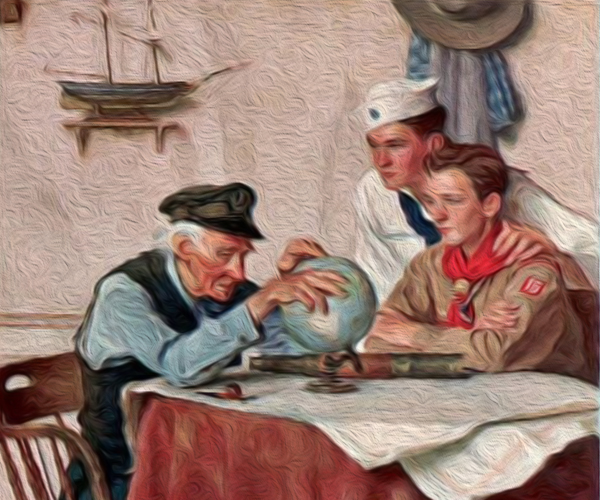
Understanding Military Terminology - Mass casualty
(DOD) Any large number of casualties produced in a relatively short period of time, usually as the result of a single incident such as a military aircraft accident, hurricane, flood, earthquake, or armed attack that exceeds local logistic support capabilities. Also called MASCAL. Joint Publications 4-02 (Health Service Report)
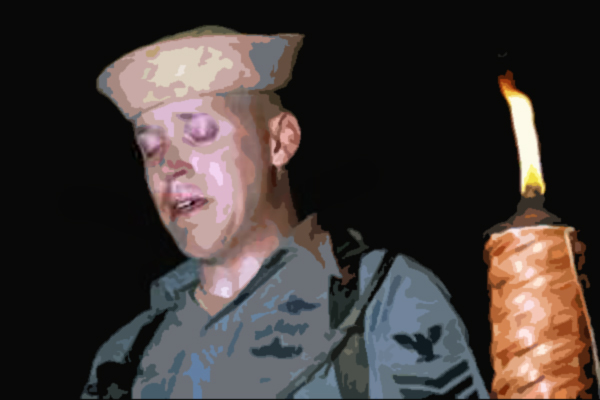
The Old Salt’s Corner
“WHO LOVED SO WELL”
(A sailor's eulogy)
We sailed the sea by oceans light,
Around the horn through restless night.
Our course and luck did make it right,
To see things new in strange delight.
The seas were harsh and took their toll
With branded flesh and tortured soul.
And when at last the sun sat low,
It touched the earth with blood red glow.
The mighty wars have all been won.
Now empty winds slack sails undone.
The world is ours but mates care not,
And search in vain for wars unfought.
Silver breakers plight our trough,
To sails unfurled and winds aloft.
Spirits soar on breezes free,
That bear the souls of sailors we.
Hear our prayer Oh Lord our God.
We lived to serve and wield thy rod.
Though wretches we and racked with flaws,
We are the ones who fought thy cause.
Now bleached white bones on foreign sands,
Attest the toll in far off lands,
For those who heard their country's call,
Brave sailors each, who came to fall.
Remember those who served on ships,
And bid farewell on endless trips,
Across the seas to Timbuktu,
And lived and died, these chosen few.
We ask this, Lord, for those so true,
And honor bound beneath skies blue.
Who served and died for freedom's hand,
To hold and cherish this, your land.
A sailor's death on ships of sleep,
With few to know and none to weep.
For faith so brave, a soul to keep,
A silent grave in oceans deep.
And when the end has come at last,
And unfilled shadows heaven casts.
Remember we who served and fell,
And to the hosts of heaven tell.
Bring home my boys who loved so well.
~ (Robert E. Browne CPO, USN, ret.)

“I’m Just Sayin’”
A conscience is what hurts when all your other parts feel so good.”

“Thought for the Day”
“Blessed are they who can laugh at themselves for they shall never cease to be amused.
~ Unknown

“What I Have Learned”
“Your character is your destiny.”
~ Anonymous

Bizarre News (we couldn’t make up stuff this good – real news story)

Cincinnati parents Matthew and Martha Miele have claimed that their six-year-old son was suspended for three days from Our Lady of Lourdes School in Westwood, Ohio, because he pretended to aim and shoot an imaginary bow and arrow at a classmate during recess.
Matthew Miele told Cincinnati television station WCPO that he didn't “see anything wrong” with the behavior, but the school maintained a “zero tolerance policy toward threatening gestures”:
Parents are mad that a Catholic school suspended their 6-year-old son for pretending to shoot an imaginary bow and arrow at recess.
“I don't see anything wrong with the way he was playing”, said the father, Matthew Miele.
Miele said his son served the second day of his three-day punishment at Our Lady of Lourdes School in Westwood. He wants the school to drop the issue.
“The punishment is so severe that it’s hard, as a parent, to make this a teachable moment for our kid so that we can move forward. I think we have to lose this. It sounds a little editorial, possibly like they're using our platform to teach that lesson”, Miele said.
Miele said his son was playing outside when a teacher saw what he was doing and brought it to the principal's attention. That's when Matthew's son was called to the principal's office.
Martha Miele told another Cincinnati television station, WLWT, that she called Principal Joe Crachiolo to ask if the suspension could be reconsidered:
“I didn't really understand. I had him on the phone for a good amount of time so he could really explain to me what he was trying to tell me. My question to him was 'Is this really necessary? Does this really need to be a three-day suspension under the circumstances that he was playing and he's 6 years old?'”
“He told me that he was going to stand firm and that he was not going to change it”, Martha Miele said.
WLWT reported that Crachiolo e-mailed the Mieles about the disciplinary action, later referencing a letter sent to parents (but not specifying whether the letter was sent to all parents of students at Our Lady of Lourdes):
The school's principal Joe Crachiolo was alerted to the incident after a teacher spotted him pretending to be a Power Ranger as he was playing outside with friends.
The parents say they encourage their son to use his imagination as much as possible, and are frustrated that their pleas for their son's suspension to be reconsidered fell on deaf ears.
Crachiolo sent a letter home to parents stating in part:
“I have no tolerance for any real, pretend, or imitated violence. The punishment is an out of school suspension.”
The content of the e-mail sent to the Mieles by Crachiolo wasn't detailed in any news reports of the incident, nor was it confirmed the “threatening gesture” in question involved nothing more than pretending to shoot a bow and arrow. Principal Crachiolo stated that the school prohibited all violent actions and referenced “games” and "shooting" but wasn't specifically quoted as denoting that the student's imitating the use of a bow and arrow was the sole action that prompted disciplinary consequences:
”Recently, there have been some 'games' being played during recess time. These various games have involved students pretending to 'shoot' other students”, he wrote.
“These games are not appropriate in a Catholic school or any other school setting. It is not 'fun' and certainly not Catholic to pretend to harm another person.”
Although the Mieles provided their version of events to several news outlets (and it was widely picked up by several more), the school hasn't confirmed the reason for the boy's suspension to the media. When asked about it by WLWT, the archdiocese simply stated they “cannot comment on disciplinary issues involving a minor”.
WLWT, Cincinnati (11/02/2015)
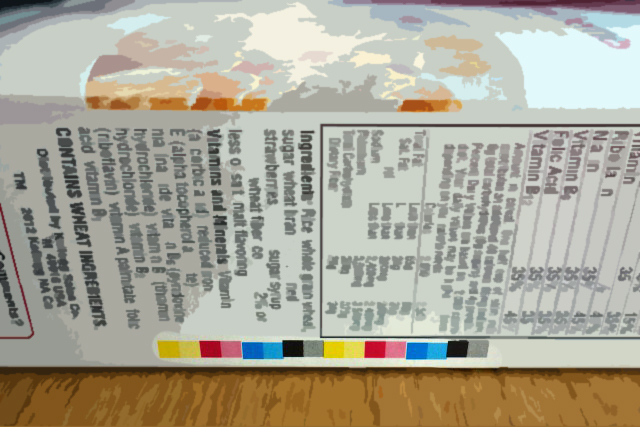
Mr. Answer Man Please Tell Us: What Are The Colored Circles on Food Packages?
There's a lot of information crammed onto food packaging these days, and along with all of the helpful stuff (like nutritional data and ingredients), there's also the mysterious, multicolored row of circles or squares that serves a very important purpose ... for the printer.
Referred to as “printer's color blocks” or “process control patches”, this grid of color swatches indicates which hues of ink were used to produce the design on the package. The printer checks these colored circles or squares to determine whether a package conforms to the necessary color scheme for the product. In the case of any problems, the color blocks let both the human and computerized printers know if a deficiency (or surplus) of color caused the issue.
The color blocks are usually pictured as circles on most bagged products and squares on boxed goods, with the most common being black, cyan, magenta, and yellow, since they're the basis of most colors produced by printers. If the bulk of the package is printed in one or two other colors, they'll usually turn up in their own blocks (called “spot colors”), too. Bags of Cheetos, for example, will almost always have at least one orange block, but usually two or more in different hues.
If you don't see a set of color blocks on your bag of chips or box of cookies, you don't need to worry. The decision to include this element is an option, not a rule—though most large-scale, mass-produced products have some variation of color blocks on their packages. Some companies also crop off the color blocks during the packaging process.
Oh, and if you see the color blocks, you'll probably find a symbol that looks like the cross-hairs of a rifle scope somewhere on the package, too. These “register marks” (or “position marks”) are used to align all of the colors printed on the packaging—yet another helpful tool for the printer, but not really of any use to consumers.
Mental Floss
• Slate

Where Did That Saying Come From?
“Rub the Wrong Way:”
Meaning: To irritate, bother, or annoy someone.
History: In colonial America, servants were required to wet-rub and dry-rub the oak-board floors each week. Doing it against the grain caused streaks to form, making the wood look awful and irritating the homeowner.Phrases.org UK

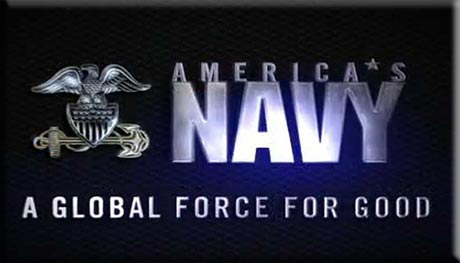
NAVSPEAK aka U.S. Navy Slang
Johnny Cash's: Winter Working Blue uniform. So designated because they were all black, (though called Navy blue) and Johnny Cash was the man in black. Occasionally also referred to as the “Gestapo” uniform.
Lettuce Browner: The machine in the galley that gives the lettuce leaves their rich, brown color.
Liberty: Free time away from work or the ship, usually after working hours or in port. Differs from leave (see above) in that you must stay close to your home station and it is generally much shorter.
Liberty Hound: A sailor who loves liberty more than anything else.
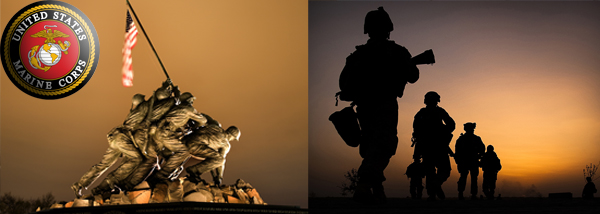

Just for you MARINE
Guide: The person responsible for the unit guidon and upon whom the unit forms when in formation.
Guidon: The official pennant of a platoon or company. At battalion or squadron level or above the unit has official colors and they parade in relation to the national flag.
Gun: Artillery or other weaponry in which the barrel does not contain rifling (lands and grooves) used to spin a projectile for greater accuracy.
Gun Bunny: Pejorative term for someone in the field artillery.
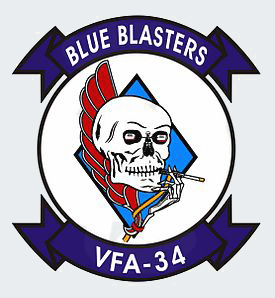
Naval Aviation Squadron Nicknames
VFA-34 - Strike Fighter Squadron 34: “Blue Blasters”
NAS Oceana, Virginia
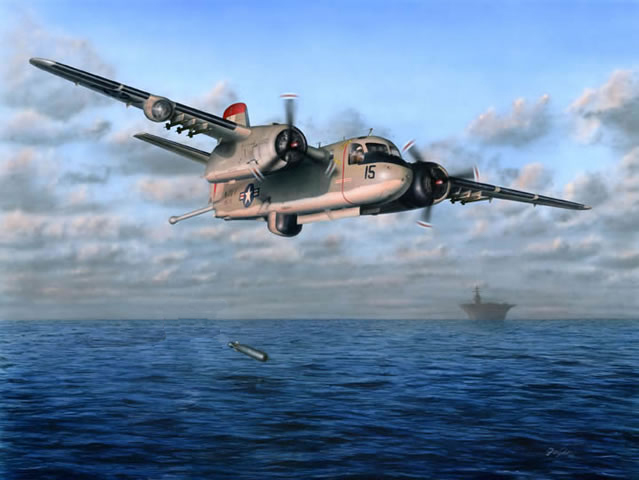
Aircraft Nicknames
S-2F Tracker: Stoof was the first purpose-built, single airframe anti-submarine warfare (ASW) aircraft to enter service with the U.S. Navy.
Designed and initially built by Grumman, the Tracker was of conventional design with twin engines, a high wing and tricycle undercarriage.
Grumman S2F Tracker / Wikipedia

The Strange, Mysterious or Downright Weird
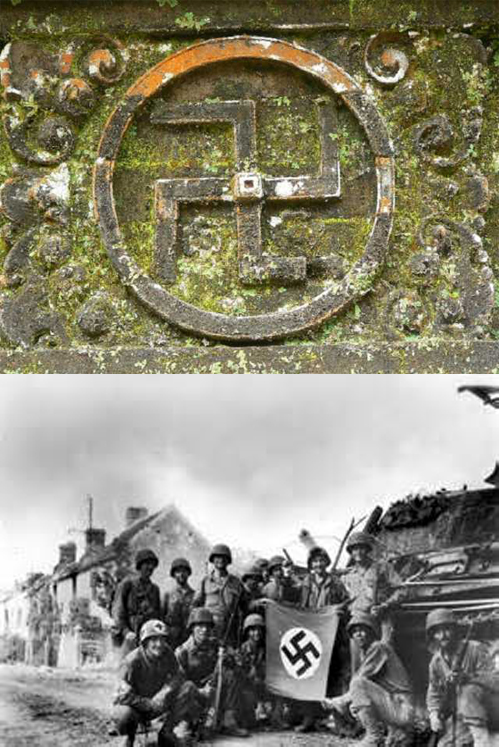
The swastika has been around for over 3,000 years and commonly symbolized goodness and luck, up until its use by the Nazis in Germany. The now reviled image was used by cultures all over the world, including early Christians, Jews, Hindus, Buddhists and even Native Americans.
In more recent history, the swastika was still prominent just before the rise of the Nazi party. A few American uniforms featured the symbol in World War I, Coca Cola used it in advertising and, sports teams even took its name.
The Nazis deeply complicated the swastika's long existence as a symbol for good, and looking back upon its thousands of years of prominence in cultural history can yield some results that appear incredibly strange with contemporary eyes. To salvage the image, it has been proposed that the clockwise version of the swastika should represent evil while counterclockwise would represent goodness.
USHMM (United States Holocaust Memorial Museum) / Wikipedia


SONG FACTS
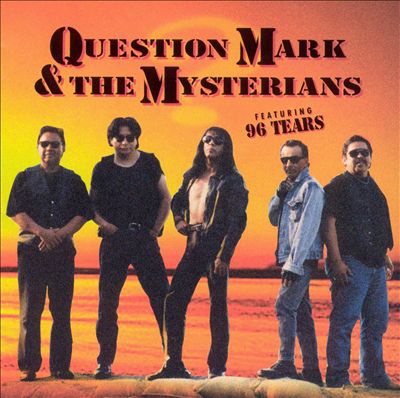
“96 Tears” - Question Mark & the Mysterians
Album: Question Mark & the Mysterians featuring 96 Tears
Released 1966 
This song was written by Question Mark “?”, the band's frontman who wanted to be anonymous (he's listed on the composer credits as (Rudy Martinez). At one point he referred to the individual band members only by three-letter names (at one point, the band was known as XYZ). The mystery helped market the group, who wore dark glasses to add to the intrigue.
Since mystery has always been a staple of their act, it's hard to know which stories about the group are factual. When they recorded this song, they were a five-piece whose families migrated from Mexico and Texas to work in the Saginaw Valley in Michigan.
Question Mark “?” tells us that the song was always called “96 Tears”, and never “69 Tears” or “Too Many Teardrops” as sometimes reported. He insists that the number 96 has a deep, philosophical meaning, but refuses to tell us what that is.
Note that the singer is not the one crying the 96 Tears. He's been dumped, and plans to get revenge by reuniting so he can dump her back. That's when she'll be crying the 96 tears.
When the group came up with this song, Question Mark “?” didn't want to use a title with a number in it because he thought they would be accused of ripping off The Rolling Stones, who had a hit with “19th Nervous Breakdown”  . His bandmates convinced him to go with it.
. His bandmates convinced him to go with it.
The record was taped in a converted living room in Bay City, Michigan. The band then had the Texas-based Pa-Go-Go Records press 500 copies so they could distribute them to the DJ's in southern Michigan. The song became the most requested record on WTAC Flint, and CKLW out of Windsor, Canada, which went into Detroit. Cameo Records, having solvency problems, picked up the record after one of its staffers heard it on CKLW.
In an interview with Question Mark “?”, he talked about how this song came together: “Little Frank [keyboard player Frank Rodriguez] comes in singing a tune, and I said, 'I've heard that before. And I ain't going to do nothing until I've heard where that music and the title of it comes from.' He played it for like 45 minutes. Everybody's getting mad. And then all of a sudden it dawned on me, I said, 'Oh, I know where I heard that. I wrote that song long time ago.'
Then the lyrics came out: 'Too many teardrops for one heart to be crying,' all that came out just like that. Boom. See, it was meant to be. There are certain things that are meant to be.”
The follow-up to “96 Tears”, “I Need Somebody”  , peaked at #22 in 1966. Three more singles followed including “Can't Get Enough Of You, Baby”
, peaked at #22 in 1966. Three more singles followed including “Can't Get Enough Of You, Baby”  , which made #56 in 1967. The group disbanded in 1968, but have reunited from time to time since.
, which made #56 in 1967. The group disbanded in 1968, but have reunited from time to time since.
The organ riff on this song is one of the most recognizable in rock, and helped define the sound of that era.
Often thought to be a Farfisa, the band's keyboard player Frank Rodriguez used a Vox Continental on “96 Tears”.
This trashy bar band sound would later become vintage - many musicians use a Vox or Farfisa to get a retro sound (see: “Dirty Laundry”  by Don Henley). Hearing this sound causes a rush of nostalgia for those of a certain age.
by Don Henley). Hearing this sound causes a rush of nostalgia for those of a certain age.
Garland Jeffreys covered this in 1980, with moderate success at the end of the disco era. Question Mark & the Mysterians  re-formed that year, with ? the only original member.
re-formed that year, with ? the only original member.
Question Mark & the Mysterians official site / Michigan Rock & Roll Hall of Fame / Rolling Stone / Billboard / Song Facts / Wikipedia
Image: “96 Tears (album)” by Question Mark & the Mysterians
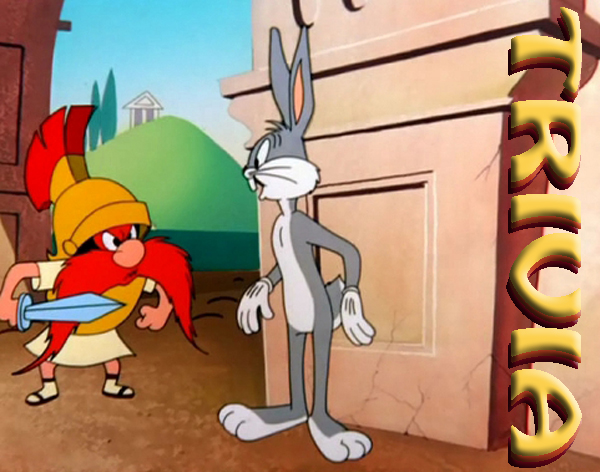
Trivia
● Zero is the only number that cannot be represented by Roman numerals.
● Kites were used in the American Civil War to deliver letters and newspapers.
● The song, Auld Lang Syne, is sung at the stroke of midnight in almost every English-speaking country in the world to bring in the new year.

A Test for People Who Know Everything
Omar Knedlik of Coffeyville, Kansas, invented the Icee (also called a Slurpee, Slush, or Mr. Misty) in the late 1950s. What was the first flavor he offered?
● Answer for People Who Do Not Know Everything, or Want to Verify Their AnswerThe Wichita Eagle
\
Answer to Last Week's Test
Who was the first recipient of the Distinguished Flying Cross (for heroism or achievement in aerial combat)?
Answer: Charles Lindbergh. He achieved this feat a year before his famous transatlantic flight. Wikipedia
\

Joke of the Day
There is an overweight guy who is watching TV. A commercial comes on for a guaranteed weight loss of 10 pounds in a week.
So the guy, thinking what the hell, signs up for it. Next morning an incredibly beautiful woman is standing at his door in nothing but a pair of running shoes and a sign about her neck that reads, “If you can catch me, you can have me.”
As soon as he sees her, she takes off running. He tries to catch her, but is unable. This continues for a week, at the end of which, the man has lost 10 pounds. After this he tries the next weight loss plan, 15 pounds in a week.
The next morning an even more beautiful woman is standing at the door, in similar conditions. The same happens with her as the first woman, except he almost catches her. This continues for a week, at the end of which he, as suspected, weighs 15 pounds less.
Excited about this success, he decides to do the master program. Before he signs up, he is required to sign a waiver and is warned about the intensity of this plan.
Still he signs up. The next morning, waiting at the door, is a hulking 300 pound muscle man with nothing but a pair of running shoes, and a sign around his neck that says, “If I catch you, you're mine!” The man was supposed to lose 25 pounds in the week; he lost 34.
























